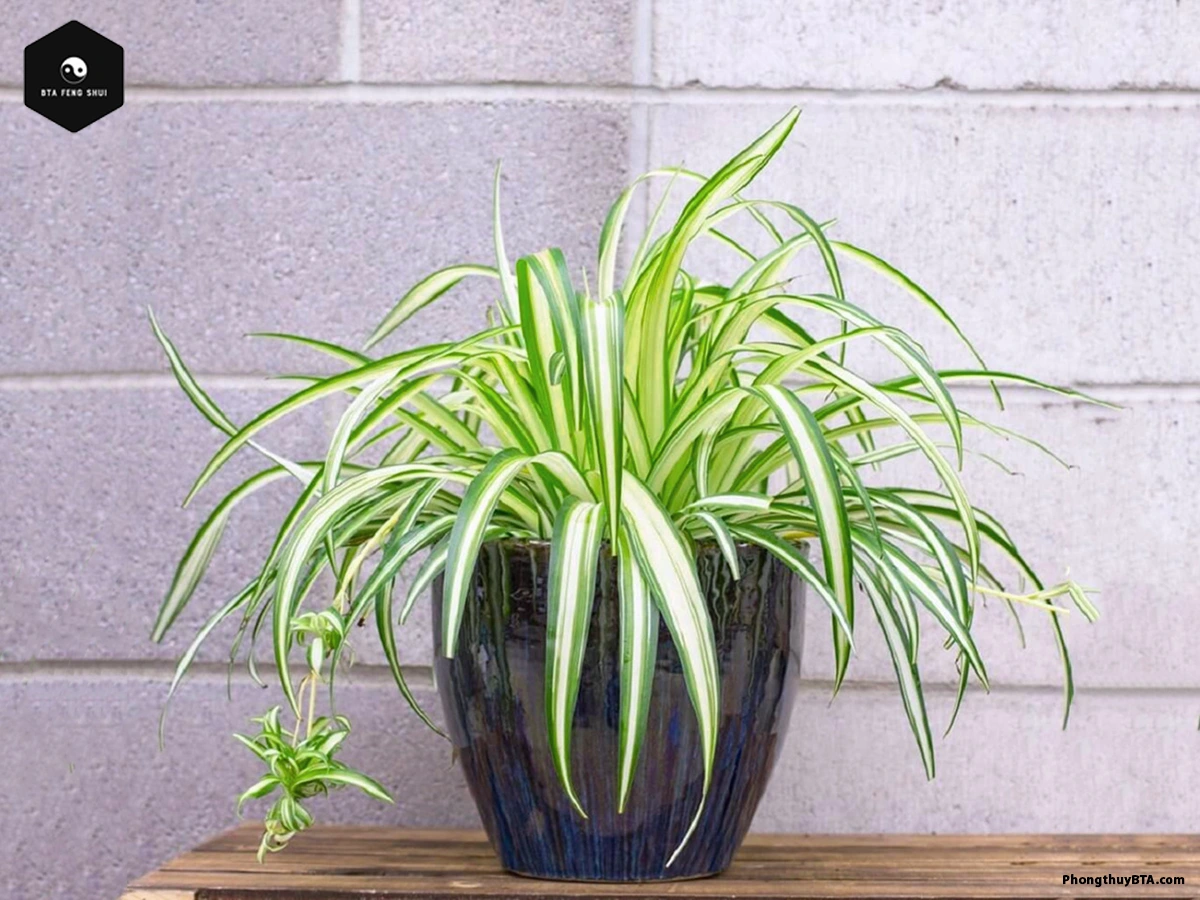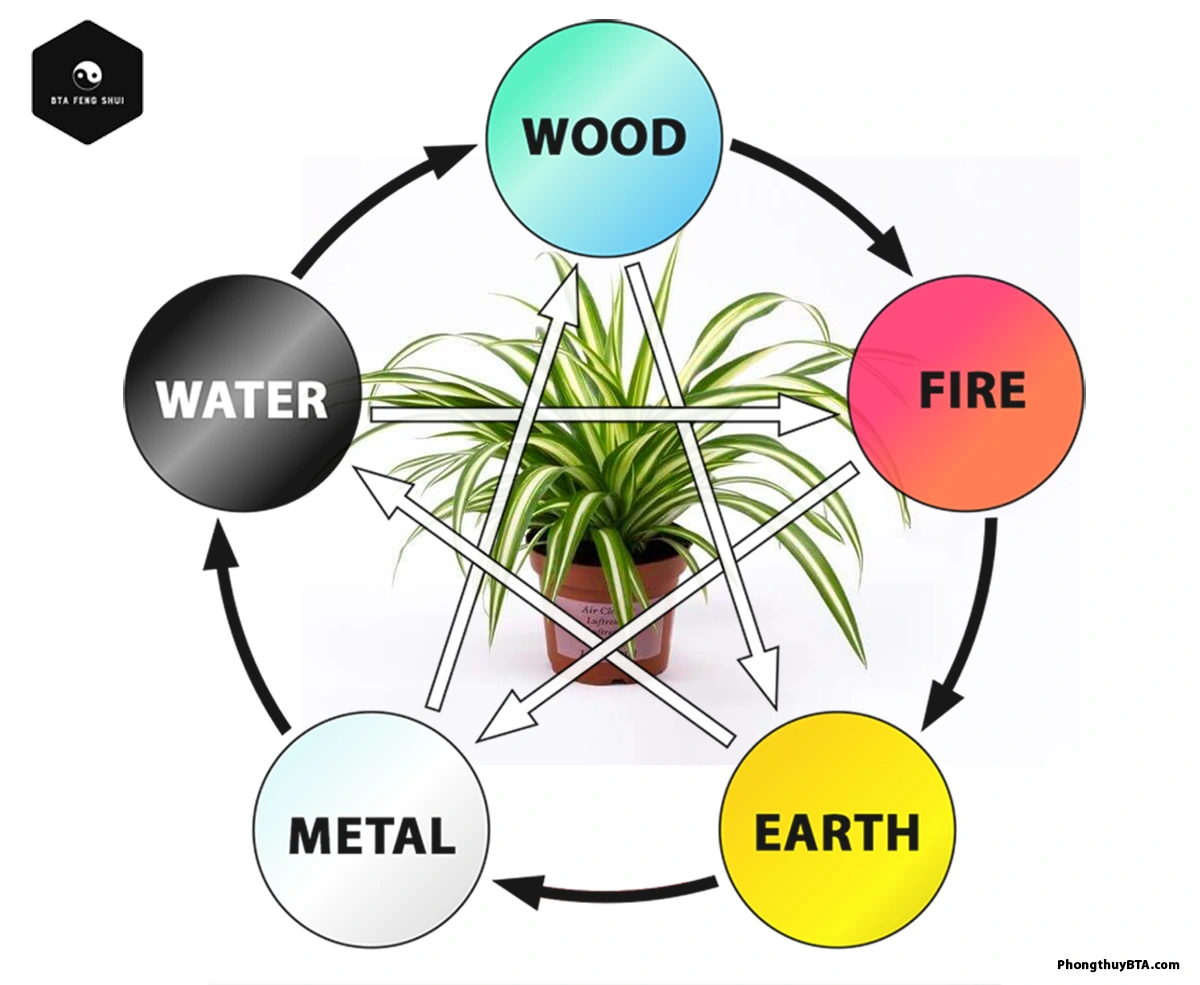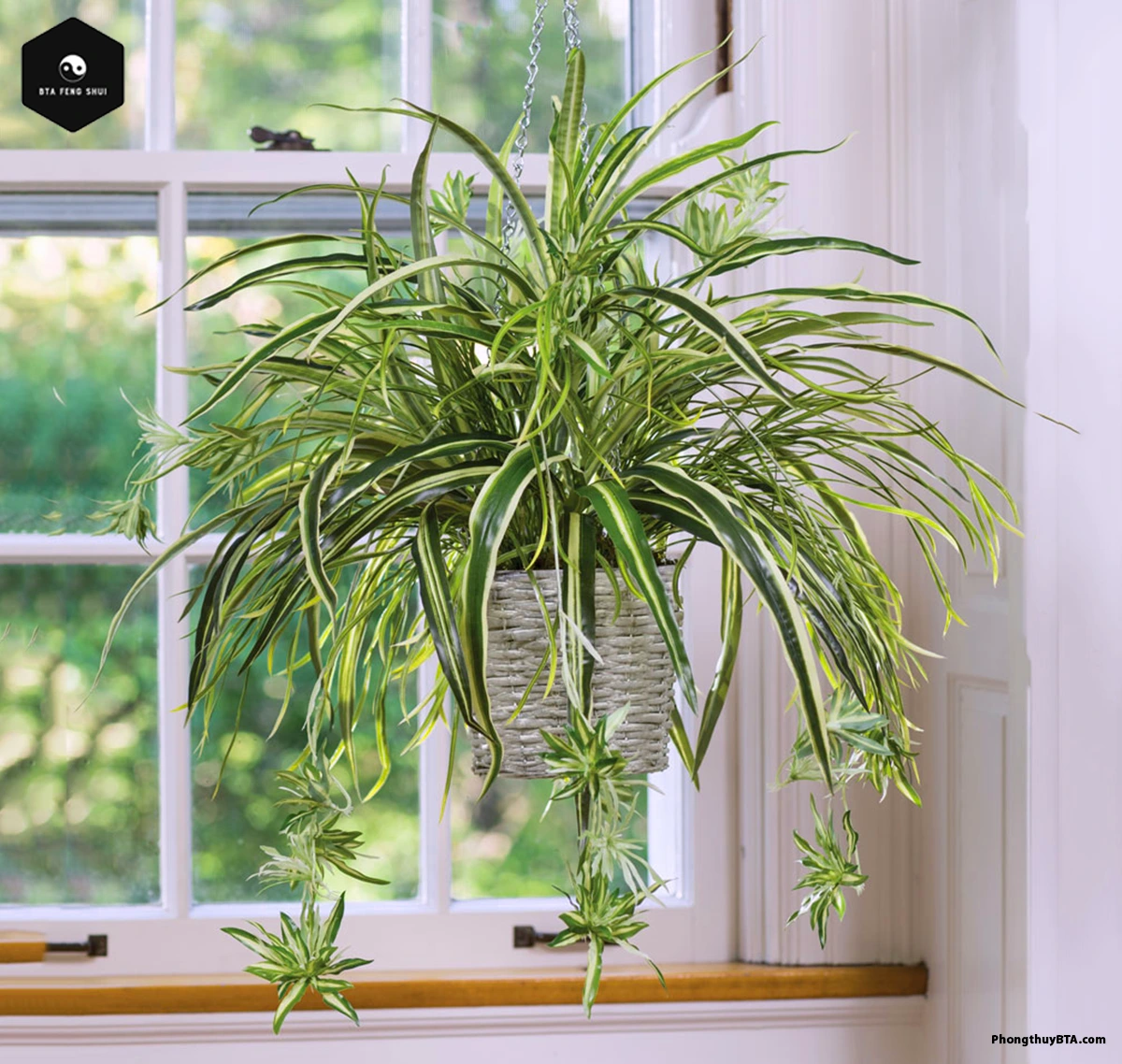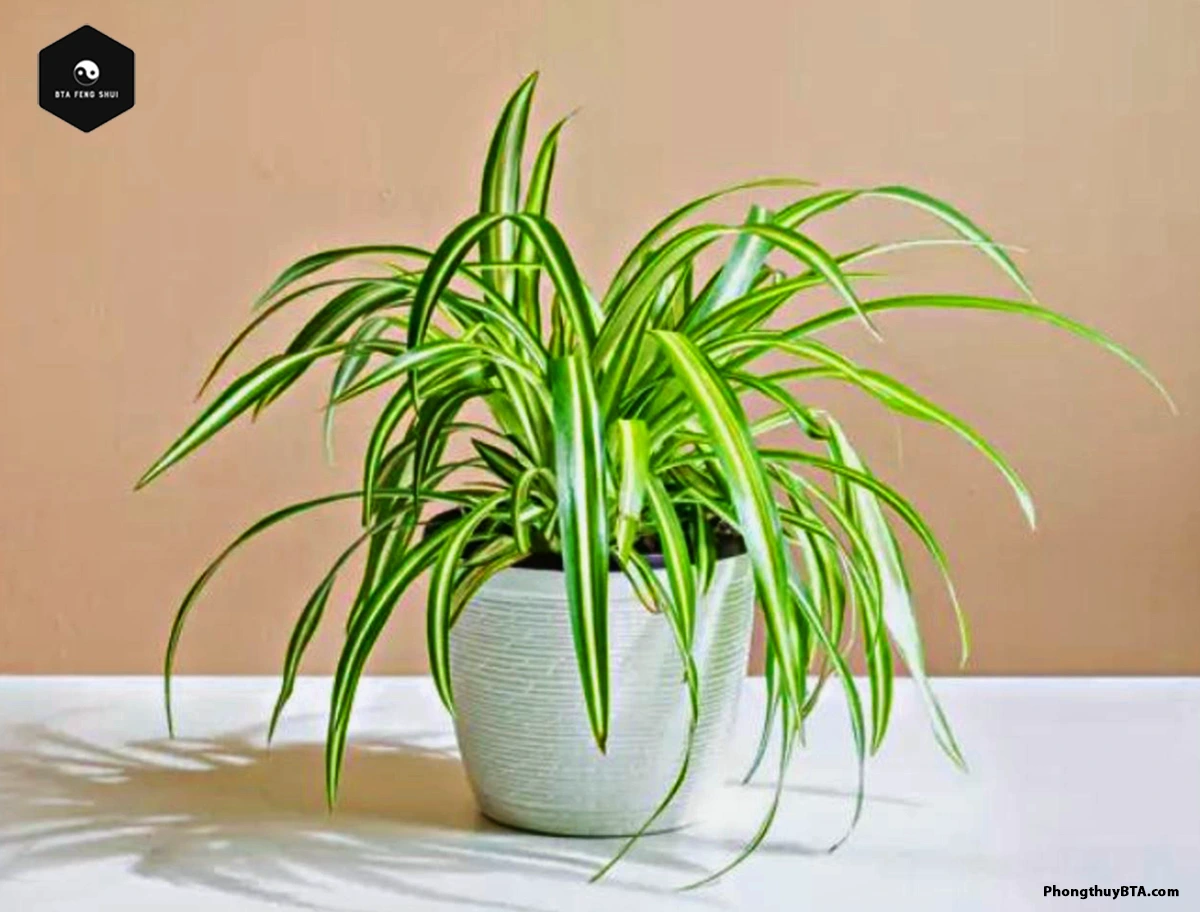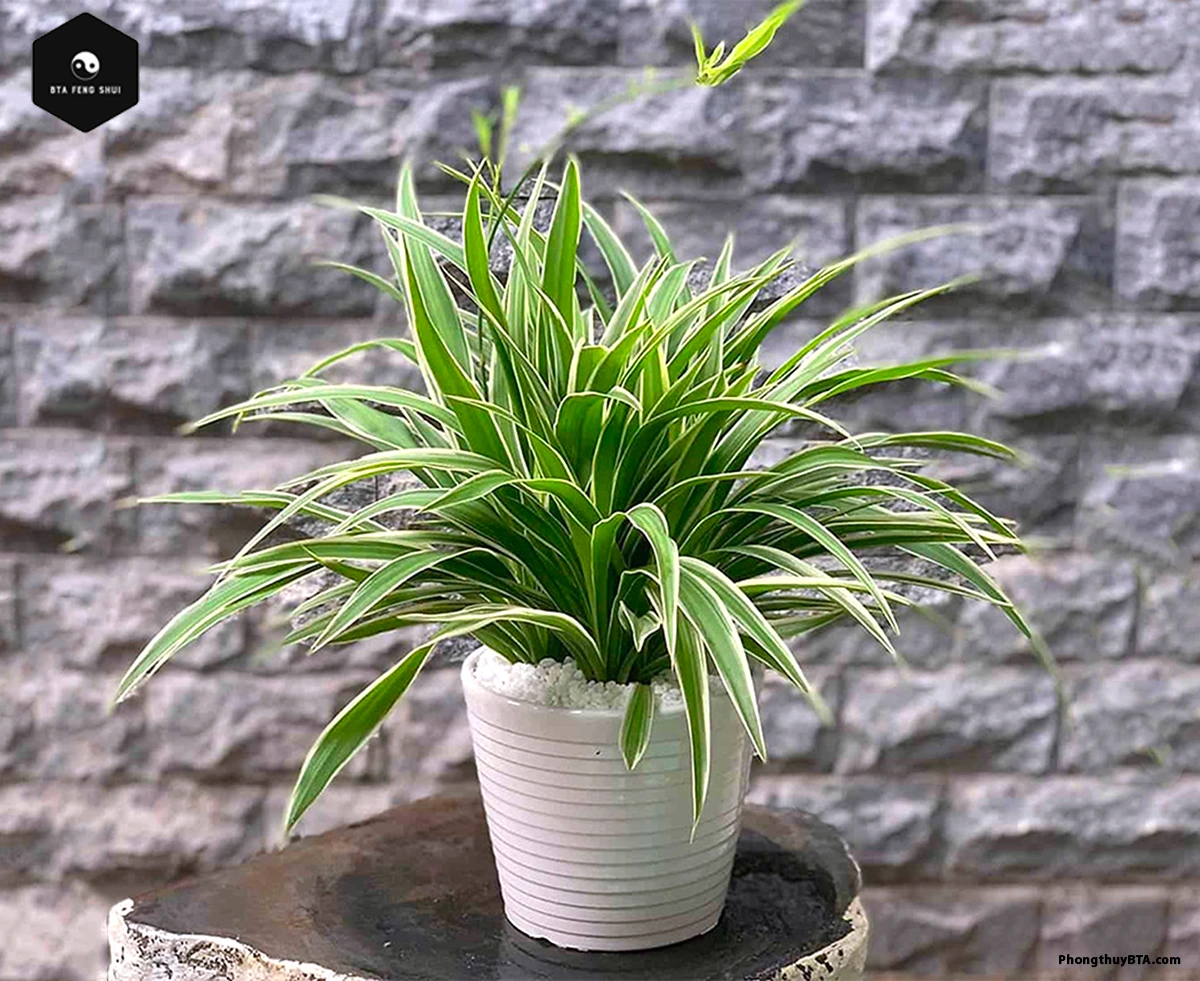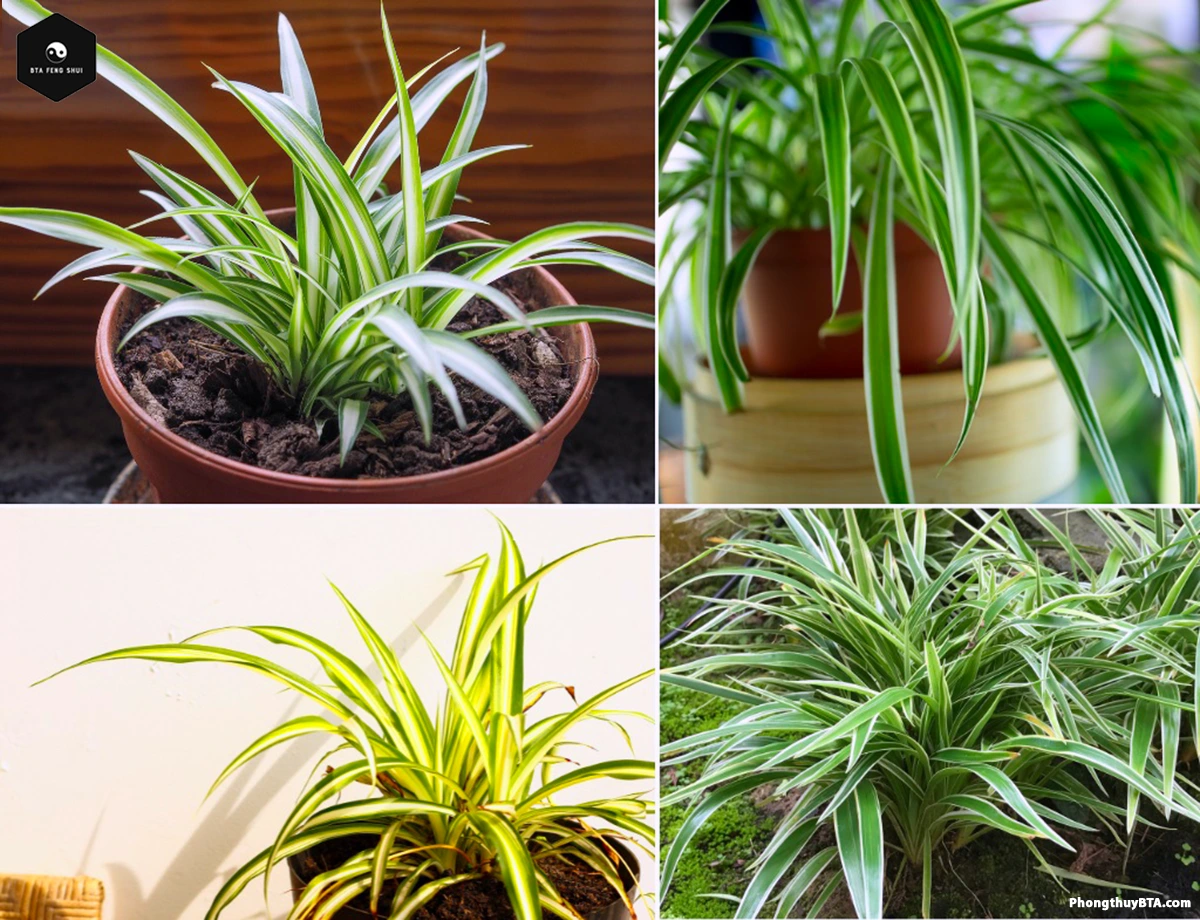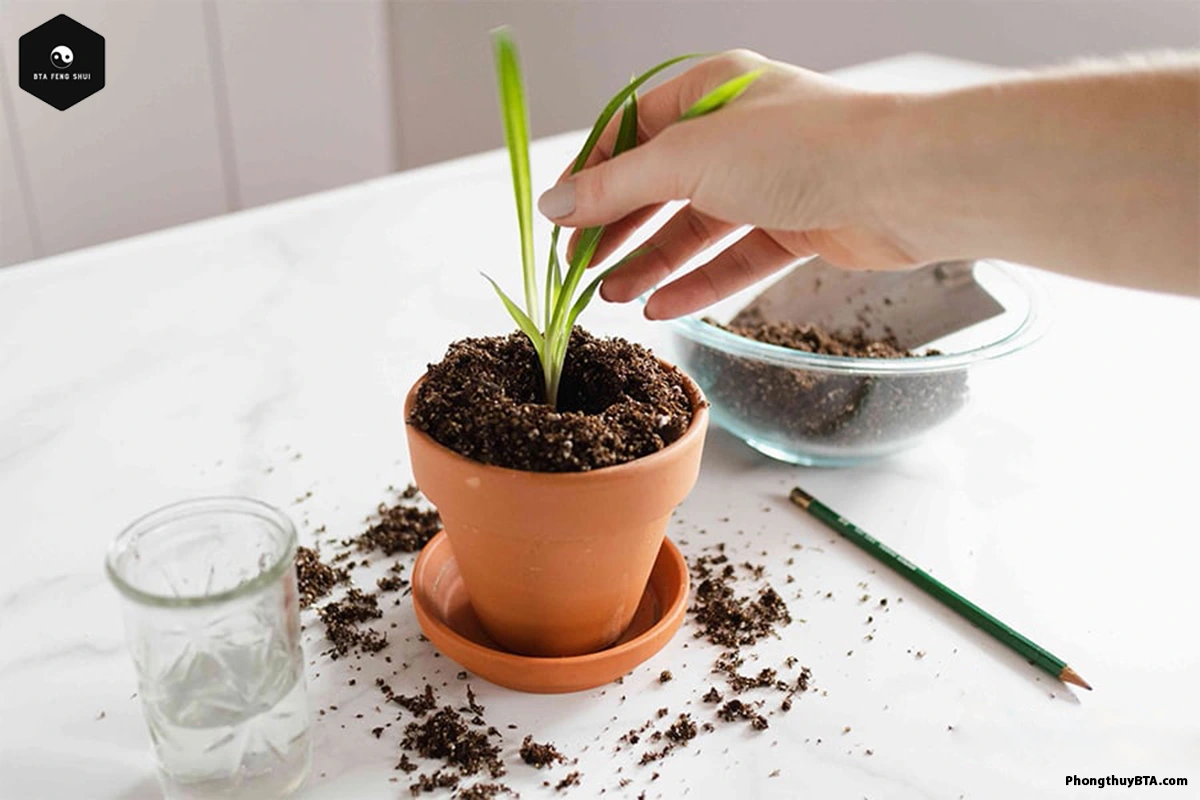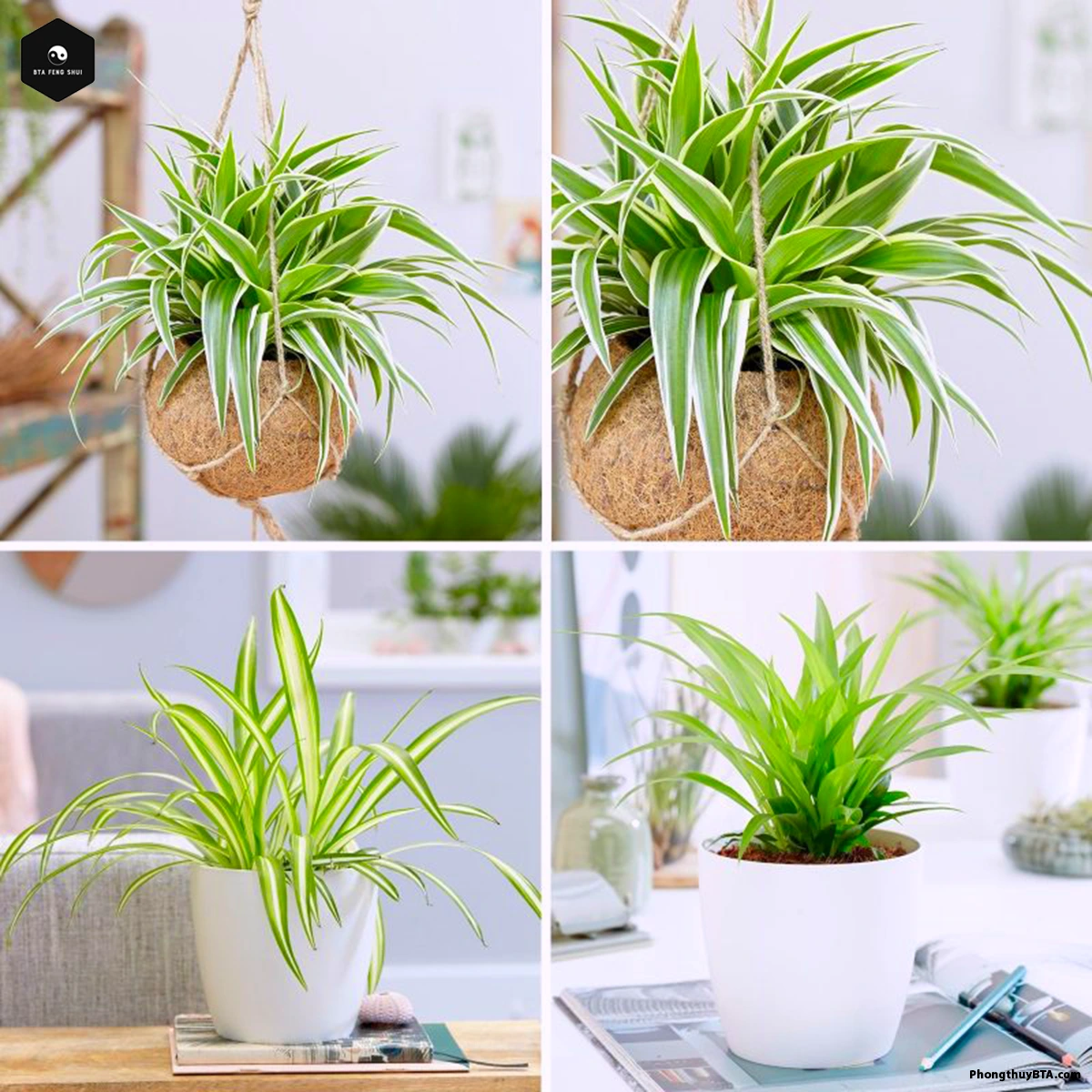Spider plant care is simple, rewarding, and perfect for anyone looking to add a touch of greenery to their home. With its graceful arching leaves and natural air-purifying qualities, the spider plant is one of the most popular houseplants for both beginners and experienced gardeners.
Beyond its beauty and low-maintenance nature, this plant is also valued in feng shui for bringing harmony, vitality, and prosperity into your living space.
What Is a Spider Plant?
The spider plant (Chlorophytum comosum), also known as the airplane plant or ribbon plant, is one of the most popular and adaptable houseplants worldwide. Native to coastal South Africa, it is loved for its vibrant variegated foliage, quick growth, and minimal care requirements.
More than just a decorative plant, it’s recognized by NASA studies for removing indoor toxins like formaldehyde and carbon monoxide, naturally improving the air quality in your home.
Key Highlights:
- Common Names: Spider plant, spider ivy, ribbon plant
- Botanical Name: Chlorophytum comosum
- Family: Asparagaceae
- Plant Type: Herbaceous, perennial
- Mature Size: 1–2 ft. tall and wide
- Sun Exposure: Partial shade
- Soil Type: Loamy, well-drained
- Soil pH: Neutral
- Bloom Time: Spring, summer, fall, winter
- Flower Color: White
- Hardiness Zones: 9–11 (USDA)
- Native Area: Africa
- Low Maintenance: Thrives with little effort, perfect for busy households
- Air Purification: Cleans indoor air of harmful toxins
- Pet-Friendly: Safe for cats, dogs, and humans (though best not ingested)
- Feng Shui Benefits: Encourages positive energy, growth, and family harmony
Spider Plants in Feng Shui
In feng shui, the spider plant symbolizes growth, prosperity, and family unity. Its lush, cascading leaves represent vitality and resilience, while the baby offshoots (spiderettes) signify abundance, fertility, and the nurturing bond across generations.
Its dual-colored foliage connects with two key elements:
- Wood (green leaves): representing growth, creativity, and expansion.
- Metal (white stripes): representing clarity, focus, and precision.
This combination makes the spider plant a powerful enhancer of balance and harmony in the home.
Best Placement for Positive Energy
Strategic placement of spider plants can amplify their feng shui effects:
- East (Health & Family): Strengthens family bonds and improves both physical and emotional well-being.
- Southeast (Wealth & Prosperity): Attracts abundance, financial growth, and new opportunities.
- Living Rooms & Common Areas: Hanging spider plants in baskets or placing them on high shelves encourages upward and outward energy flow, promoting openness and connection.
👉 Avoid placing spider plants in cramped, cluttered corners, as blocked chi reduces their positive influence.
Who Benefits Most from Spider Plants?
Spider plants are particularly harmonious for people whose birth charts are dominated by Wood or Metal elements, as the plant directly supports and balances these energies:
- Wood element people (Tiger, Rabbit years): Benefit from enhanced vitality, creativity, and personal growth.
- Metal element people (Monkey, Rooster years): Gain greater clarity, focus, and balance in their environment.
That said, spider plants are universally beneficial—anyone can enjoy their uplifting chi, whether seeking prosperity, family harmony, or a refreshing sense of vitality in their home
Spider Plant Care Essentials
Caring for a spider plant is simple, but understanding its needs ensures optimal health. Below are the key care requirements to keep your plant thriving.
Light Requirements
Spider plants flourish in bright, indirect light, ideally near a north- or east-facing window where filtered sunlight nourishes without scorching.
- What to Avoid: Direct sunlight can burn leaves, causing brown tips. Low light may dull variegation and slow growth.
- Pro Tip: Use a grow light in low-light areas and rotate the plant occasionally for even exposure.
Watering Spider Plants
Spider plants’ fleshy roots store water, making them forgiving of irregular watering. However, consistent care prevents issues.
- How Often to Water: Water thoroughly once a week in spring and summer, letting the top 1–2 inches of soil dry out. Reduce to every 10–14 days in fall and winter.
- How to Check: Test soil dryness by inserting your finger up to the second knuckle. If dry, water thoroughly.
- Water Quality: Use distilled or rainwater to avoid fluoride or chlorine buildup, which causes brown tips.
Soil and Potting
Use well-draining, slightly acidic to neutral soil (pH 6.1–7.5), such as a general-purpose potting mix or soilless medium.
- Potting Tips: Select a pot with drainage holes to prevent waterlogging. Repot every 1–2 years when roots crowd the pot.
- Soil Mix: Add perlite or sand for drainage, or mix in organic compost for nutrients.
Temperature and Humidity
Spider plants prefer 60–80°F (15–27°C) and moderate humidity.
- Temperature: Avoid drafts, vents, or extreme heat/cold.
- Humidity: Mist occasionally or use a humidifier in dry climates to prevent brown tips.
Fertilizing for Growth
Fertilizing supports lush growth during the active season (spring and summer).
- How to Feed: Apply a balanced, water-soluble fertilizer (e.g., 10-10-10) monthly at half strength. Avoid over-fertilizing to prevent reduced spiderette production.
- When to Skip: Skip fertilizing in fall and winter during dormancy.
Pruning and Maintenance
Minimal grooming keeps spider plants looking vibrant.
- Trimming: Snip brown or yellow tips with clean scissors. Remove dead leaves to encourage growth.
- Cleaning: Wipe leaves with a damp cloth to remove dust, boosting photosynthesis and energy.
Propagating Spider Plants
Spider plants are easy to propagate via their spiderettes, spreading their positive energy.
How to Propagate:
- Cut the Spiderette: Snip a healthy spiderette with brown nodules (pre-roots) from the mother plant.
- Root in Water: Submerge nodules in water; roots form in 2–4 weeks.
- Root in Soil: Plant directly in moist, well-draining soil, securing with a paper clip until rooted.
- Care for New Plants: Treat as mature plants, following the care tips above.
=>> Read more:
- Snake Plant Care: Feng Shui Powerhouse for Your Home
- Money Tree Care: Feng Shui Benefits and Growing Tips
Common Spider Plant Problems and Solutions
Address these common issues to maintain a healthy plant:
- Brown Leaf Tips: Caused by fluoride, low humidity, or over-fertilizing. Use distilled water, mist occasionally, and reduce fertilizer.
- Yellowing Leaves: Indicates overwatering or nutrient deficiency. Ensure proper drainage and consider fertilizer.
- No Spiderettes: Due to insufficient light or over-fertilization. Move to a brighter spot and adjust feeding.
- Pests: Treat scale, mealybugs, or aphids with a diluted dish soap solution (1 tsp per liter) every 2–3 days.
- Root Rot: Prevent with proper drainage and less frequent watering.
- Feng Shui Perspective: Promptly addressing issues prevents energy stagnation, maintaining harmony.
Spider Plant Varieties
Try these cultivars for variety:
- ‘Vittatum’: Dark green leaves with a creamy-white central stripe, elegant but slower-growing.
- ‘Variegatum’: Broad green leaves with white margins, producing fewer spiderettes.
- ‘Milky Way’: Light green leaves with a broad white center, bright and airy.
- ‘White Stripe’: Narrow white stripe down the leaf center, with yellowish flower stalks.
FAQs About Spider Plant Care
How often should I water my spider plant?
Water weekly in spring/summer, allowing the top 1–2 inches of soil to dry. Reduce to every 10–14 days in fall/winter.
How much light does a spider plant need?
Bright, indirect light is best. Avoid direct sun to prevent leaf burn.
Are spider plants easy to care for?
Yes, their adaptability and resilience make them ideal for beginners.
Do spider plants need sunlight?
They thrive in bright, indirect light but tolerate low light. Avoid direct sunlight.
How do I propagate a spider plant?
Cut a spiderette and root it in water or soil; roots form in 2–4 weeks.
Why are my spider plant’s leaves turning brown?
Brown tips result from fluoride, low humidity, or over-fertilizing. Use distilled water and mist occasionally.
The spider plant (Chlorophytum comosum) is a low-maintenance, air-purifying houseplant that brings beauty and positive feng shui energy to your home. By placing it thoughtfully, providing bright, indirect light, and watering sparingly, you’ll enjoy a thriving plant that enhances harmony and prosperity. Embrace its vitality and share its spiderettes to spread abundance!
Please rate this guide 5 stars and share it with fellow plant lovers! For more feng shui and plant care insights, visit BTA Feng Shui.



